How to Survive a Heat Wave

How to Beat the Heat: Essential Strategies for Surviving a Heat Wave
Heat waves are the deadliest weather-related disaster in the United States, causing more annual fatalities than hurricanes, tornadoes, and floods.
Heat waves can be overwhelming, making us feel like we’re melting in the sun. When temperatures soar, our bodies struggle to keep cool, and even everyday activities can become exhausting and dangerous. Understanding how to navigate these extreme temperatures is crucial for our well-being.
This guide will provide practical tips and strategies to survive a heat wave, ensuring you stay cool, hydrated, and safe. By following these guidelines, you can reduce the risk of heat-related illnesses and make the most of your summer, even when the heat is at its peak.
Key Points
- Stay Hydrated: Drink plenty of water regularly to avoid dehydration, and avoid alcohol, caffeine, and sugary drinks.
- Stay Indoors: Limit outdoor activities during peak heat hours and use fans or air conditioning to stay cool.
- Recognize Heat-Related Illnesses: Learn the symptoms of heat exhaustion and heatstroke and know how to respond to these emergencies.
10 Life-Saving Tips on How to Survive a Heat Wave
From staying hydrated to recognizing heat-related illnesses, these strategies will help you stay cool, safe, and comfortable during extreme temperatures.
- Stay Hydrated: Drink plenty of water throughout the day, and avoid alcohol, caffeine, and sugary drinks as they can dehydrate you.
- Wear Light Clothing: Opt for light-colored, loose-fitting clothes made from breathable cotton to stay cool.
- Limit Outdoor Activities: Avoid outdoor activities during peak heat hours, usually between 10 a.m. and 4 p.m.
- Use Fans and Air Conditioning: Fans or air conditioners keep your indoor environment cool. If you don’t have air conditioning, visit public places like libraries or malls.
- Take Cool Showers: Cool down with frequent showers or baths. You can also use damp washcloths on your neck and wrists.
- Close Blinds and Curtains: Block out the sun by closing blinds and curtains during the hottest parts of the day to keep your home cool.
- Eat Light Meals: Opt for smaller, lighter meals that are easier to digest. Avoid hot and heavy foods that can increase your body temperature.
- Stay Informed: Monitor weather forecasts and heat advisories to stay updated on heat wave conditions.
- Check on Vulnerable Individuals: Regularly check on elderly family members, neighbors, and those with preexisting health conditions to ensure safety.
- Use Cooling Products: Consider using cooling towels, ice packs, or portable fans to help reduce your body temperature when needed.
Understanding Heat Waves
What is a Heat Wave?
A heat wave is a prolonged scorching weather accompanied by high humidity. These events are often caused by high-pressure systems trapping warm air in a region, leading to temperatures significantly above average for a prolonged period.
Why are Heat Waves Dangerous?
Heat waves pose serious health risks, especially to vulnerable populations such as the elderly, children, and those with preexisting health conditions. They can lead to heat exhaustion and heatstroke and exacerbate chronic health issues. Understanding the dangers can help you take necessary precautions.
Preparing for a Heat Wave
Stay Informed
Always monitor weather forecasts and heat advisories. Being aware of an impending heat wave allows you to prepare in advance, ensuring you have all the necessary supplies and plans in place.
Stock Up on Essentials
Ensure you have plenty of water, non-perishable food, and other essentials. A first-aid kit, batteries, and a portable fan or cooling device are also good ideas.
Create a Cool Environment
Prepare your home to stay as cool as possible. Close curtains and blinds during the hottest part of the day, and use fans or air conditioning to maintain a comfortable indoor temperature.
Did You Know?
The 2003 European heat wave was one of the deadliest in recorded history, claiming over 70,000 lives across the continent due to extreme temperatures and inadequate preparedness.
Staying Cool During a Heat Wave
Hydrate, Hydrate, Hydrate
Drinking plenty of water is crucial during a heat wave. Avoid alcohol, caffeine, and sugary drinks, as they can dehydrate you. Aim to drink water regularly, even if you don’t feel thirsty.
Dress Appropriately
Wear light-colored, loose-fitting clothing made of breathable fabrics like cotton. A wide-brimmed hat and sunglasses can help protect you from the sun when you’re outside.
Limit Outdoor Activities
Stay indoors during the hottest parts of the day, usually between 10 a.m. and 4 p.m. If you need to be outside, take frequent breaks in the shade or cool areas and avoid strenuous activities.
Use Cooling Techniques
Take cool showers or baths, use damp washcloths on your neck and wrists, and sit in front of fans or air conditioners. You can also use cooling towels or ice packs to lower your body temperature.
Protecting Vulnerable Groups
Elderly Care
Check on elderly family members, friends, or neighbors frequently during a heat wave. The elderly are particularly vulnerable to heat-related illnesses due to their decreased ability to regulate body temperature. Ensure they can access a cool environment, such as air-conditioned rooms or designated cooling centers. Provide plenty of water and encourage them to drink regularly, even if they do not feel thirsty. Additionally, help them with any physical tasks that may be strenuous in the heat, such as grocery shopping or running errands.
Children
Keep children indoors during peak heat hours, usually between 10 a.m. and 4 p.m., to protect them from extreme temperatures. Encourage frequent water breaks and avoid sugary drinks that can contribute to dehydration. Never leave children in a parked car, even temporarily, as the temperature inside a vehicle can rise rapidly, leading to fatal heatstroke. Plan indoor activities to keep them entertained and safe during the hottest parts of the day.
Pets
Pets also need protection during a heat wave. Ensure they have plenty of water and a cool place to rest, such as a shaded area or a room with a fan or air conditioning. Avoid walking pets during the hottest parts of the day to prevent overheating and burns on their paws from hot pavement. Look for signs of heat distress in pets, such as excessive panting, drooling, or lethargy, and seek veterinary care immediately if you suspect heatstroke. Consider providing cooling mats or ice packs for your pets to lie on to help regulate their body temperature.
Recognizing and Treating Heat-Related Illnesses
Heat Exhaustion
Heat exhaustion occurs when the body overheats due to prolonged exposure to high temperatures, especially when combined with high humidity and strenuous physical activity. It is crucial to recognize the symptoms early to prevent heatstroke, which is more severe.
Symptoms of Heat Exhaustion:
- Heavy sweating
- Weakness
- Dizziness
- Nausea or vomiting
- Headache
- Muscle cramps
- Pale or clammy skin
- Fast, shallow breathing
Treatment for Heat Exhaustion:
- Move to a Cooler Place: Get the person to a shaded or air-conditioned area to help lower their body temperature.
- Hydrate: Have them drink plenty of water or sports drinks that replenish electrolytes. Avoid alcohol and caffeinated beverages.
- Cool Down: Apply cool, wet cloths to their skin, or have them take a cool shower or bath.
- Rest: Ensure they rest comfortably, ideally lying down with their legs elevated to promote blood circulation.
Heatstroke
Heatstroke is a severe, life-threatening condition that occurs when the body’s temperature regulation system fails, and the core body temperature rises to dangerous levels, typically above 104°F (40°C). Immediate medical intervention is critical.
Symptoms of Heatstroke:
- High body temperature (above 104°F or 40°C)
- Confusion, agitation, or disorientation
- Rapid, strong pulse
- Throbbing headache
- Nausea or vomiting
- Hot, red, dry, or damp skin
- Loss of consciousness
- Seizures
Treatment for Heatstroke:
- Call Emergency Services: Dial emergency services immediately if you suspect someone has heatstroke.
- Move to a Cooler Place: While waiting for help, move the person to a shaded or air-conditioned area.
- Lower Body Temperature:
- Cool Water: Wet their skin with cool water. You can spray them with a garden hose, sponge them with cool water, or immerse them in a tub of cool water if available.
- Ice Packs: Apply ice packs to critical areas such as the armpits, groin, neck, and back. These areas are rich in blood vessels and can help cool the body more quickly.
- Monitor Vital Signs: Monitor their breathing and pulse until medical professionals arrive. Be prepared to perform CPR if they become unresponsive.
Understanding and recognizing the symptoms of heat exhaustion and heatstroke are vital in providing adequate first aid and potentially saving a life. Always err on the side of caution and seek professional medical help if you are unsure of the severity of the symptoms.
Long-Term Strategies
Home Improvements
Consider long-term solutions to make your home more heat-resistant. This might include installing insulation, reflective roofing, or energy-efficient windows. Planting trees around your home can also provide shade and reduce indoor temperatures.
Community Resources
Utilize community resources such as cooling centers or public libraries where you can stay cool during peak heat hours. Encourage community initiatives to support vulnerable populations during heat waves.
FAQs About Heat Wave Survival
What should I drink during a heat wave?
Drink plenty of water and avoid alcohol, caffeine, and sugary drinks, as they can dehydrate you.
How can I keep my home cool without air conditioning?
Use fans, close curtains and blinds, and keep windows closed during the hottest part of the day. Opening windows at night can help cool your home.
Can heat waves cause power outages?
Yes, increased electricity use during heat waves can overload power grids, potentially causing outages. Be prepared with alternative cooling methods.
Is it safe to exercise during a heat wave?
It’s best to avoid strenuous activities during the hottest parts of the day. If you must exercise, do it early or late in the evening and stay hydrated.
How do I know if someone is suffering from heatstroke?
Symptoms include a high body temperature, confusion, rapid pulse, and unconsciousness. Seek immediate medical attention if you suspect heatstroke.
What can I do if I don't have air conditioning?
Visit public places like libraries or shopping centers with air conditioning, use fans, take cool showers, and stay hydrated.
Conclusion to Beating the Heat
Surviving a heat wave requires preparation, awareness, and proactive measures to stay cool and hydrated. By following these tips and looking out for each other, we can weather the heat safely.
Staying informed and prepared is critical to beating the heat and keeping cool during extreme temperatures.
The Most Devastating Heat Waves in History
Heat waves have caused immense suffering and loss of life throughout history. This list chronicles some of the most devastating heat waves from the past to the present, highlighting their impact and the lessons learned from each event.
- Eastern United States, 1901: The 1901 heatwave saw temperatures soar above 100°F across the Eastern United States. It lasted 11 days and caused approximately 9,500 deaths.
- North America, 1936: During the Dust Bowl era, this heat wave affected the U.S. and Canada, with temperatures up to 115°F. It resulted in an estimated 5,000 deaths and widespread crop failures.
- United Kingdom, 1976: The summer of 1976 brought an intense heat wave to the U.K., with temperatures over 95°F for several weeks. It caused significant drought conditions and numerous fatalities.
- United States, 1980: This heat wave was one of the deadliest in U.S. history, impacting central and eastern states. It resulted in around 1,700 deaths and extensive agricultural damage.
- Chicago, 1995: A week-long heat wave in July 1995 caused temperatures to rise to 106°F. The extreme heat claimed over 700 lives, mainly among older adults and those without air conditioning.
- Europe, 2003: One of the deadliest heat waves in recorded history, the 2003 event affected much of Europe, with temperatures reaching 104°F. It caused an estimated 70,000 deaths, particularly in France.
- Russia, 2010: Russia experienced unprecedented heat, with temperatures exceeding 100°F. The heat wave led to severe wildfires, crop failures, and over 56,000 deaths.
- India, 2015: In May 2015, India faced a brutal heat wave with temperatures hitting 118°F. It caused more than 2,500 deaths, highlighting vulnerabilities in the country’s preparedness and response systems.
- Europe, 2019: In June and July 2019, Europe experienced another intense heat wave, with temperatures soaring above 114°F. This led to significant disruptions, health emergencies, and numerous fatalities.
- Pacific Northwest, 2021: A record-breaking heat wave affected the Pacific Northwest of the U.S. and Canada, with temperatures reaching up to 121°F. The extreme heat caused hundreds of deaths and highlighted the increasing frequency and severity of such events due to climate change.
More Nature’s Wrath Scenarios
How to Survive a Wildfire
Wildfires are one of nature’s most unpredictable and destructive forces, and they can engulf entire…
How to Survive a Landslide
Landslides are one of nature’s sudden, unexpected acts, like finding a $20 bill in an old jacket, but far…
How to Survive a Hurricane
Hurricanes are nature’s way of reminding us who’s in charge—think of it as the weather throwing a…
How to Survive a Tsunami
Surviving a tsunami is a terrifying thought, but it’s something we should all be aware of, especially if we…
How to Survive a Lightning Strike
Thunderstorms are a mesmerizing display of nature’s power, but they also bring the terrifying threat…
Recent Survival Posts
How to Survive a Layoff
Layoffs feel personal—even when they’re not. One day, you’re responding to Slack messages and forwarding…
How to Survive a Drug Test
I never imagined I’d be so emotionally invested in a paper cup. But there I was, standing under the fluorescent…
How to Survive an Interrogation
If you’ve ever been caught in the crosshairs of an overly enthusiastic mall cop or stared down by someone…
How to Survive a Nightclub Shooting
Nightclubs pulse with life—lights flashing, music pounding, bodies packed tight on the dance floor. It’s a place to…
How to Survive a Bachelor Party
A bachelor party is a delicate mix of celebration, chaos, and questionable decision-making, wrapped…
More Nature’s Wrath Survival Scenarios

How to Survive a Landslide
Landslides are one of nature's sudden, unexpected acts, like finding a $20 bill in an old jacket—only there's no thrill of discovery, just destruction. They strike without much warning, sweeping away everything in their path—homes, roads, vehicles, and, tragically,...

How to Survive a Hurricane
Hurricanes are nature's way of reminding us who's in charge—think of it as the weather throwing a tantrum. The winds howl, the rain pours, and trees bend until they snap. But while hurricanes are frightening, surviving them is possible with good preparation, clear...
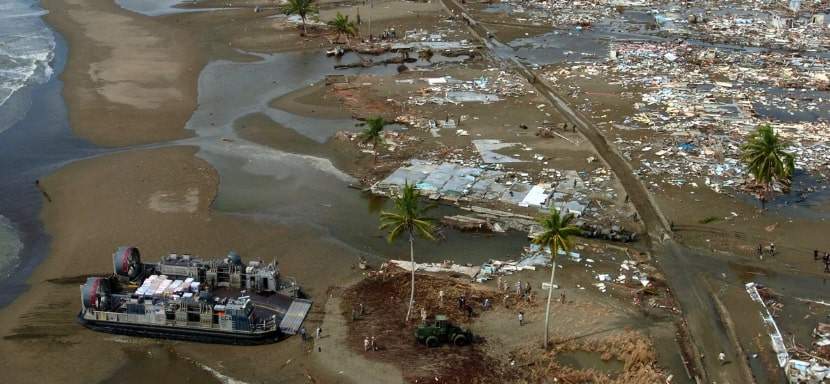
How to Survive a Tsunami
Surviving a tsunami is a terrifying thought, but we should all be aware of it, especially if we live near coastlines. A tsunami can strike with little warning, and the key to making it through alive is to know what to do before, during, and after the waves hit. Here,...
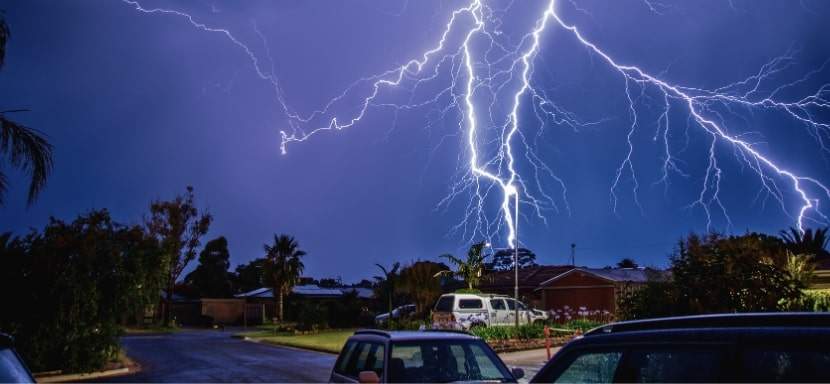
How to Survive a Lightning Strike
Thunderstorms are a mesmerizing display of nature's power, but they also bring the terrifying threat of lightning strikes. Each year, thousands of people worldwide are affected by lightning, with severe injuries and even fatalities resulting from these sudden...
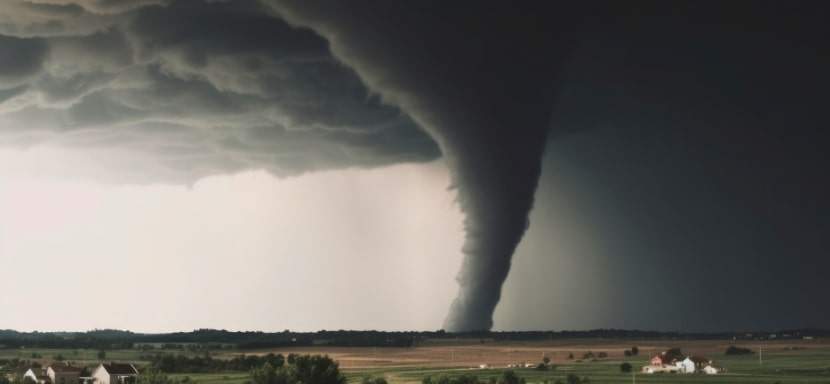
How to Survive a Tornado
Tornado Safety: How to Survive and Protect Your Family Learn life-saving strategies to protect yourself and your loved ones from the unpredictable fury of tornadoes. Tornadoes are among the most unpredictable and destructive natural phenomena. Their sudden and violent...
More Survival Scenarios

How to Survive a Layoff
When the Floor Falls Out: The Reality of a Layoff Layoffs feel personal—even when they're not. One day, you're responding to Slack messages and forwarding emails. Next, you're staring at your monitor as it logs you out... for good. Whether it's a restructuring, a...

How to Survive a Drug Test
The Cup, The Room, The Truth I never imagined I’d be so emotionally invested in a paper cup. But there I was, standing under the fluorescent hum of a strip-mall clinic, trying to recall the last time I ate a poppy seed bagel. That’s the thing about drug tests—they...

How to Survive an Interrogation
If you've ever been caught in the crosshairs of an overly enthusiastic mall cop or stared down by someone in a uniform with a clipboard and a glare, you’ve felt it — the chilly fingers of interrogation anxiety. And while most of us imagine interrogation scenes as...

How to Survive a Nightclub Shooting
Nightclubs pulse with life—lights flashing, music pounding, bodies packed tight on the dance floor. It’s a place to escape, feel the rhythm, and lose yourself in the crowd. But that same energy can turn deadly in seconds, transforming a night of fun into one of the...

How to Survive a Bachelor Party
A bachelor party is a delicate mix of celebration, chaos, and questionable decision-making, wrapped in the noble intention of sending the groom off into married life with a night he’ll (hopefully) remember. It’s a ritual as old as time—well, as old as men deciding...
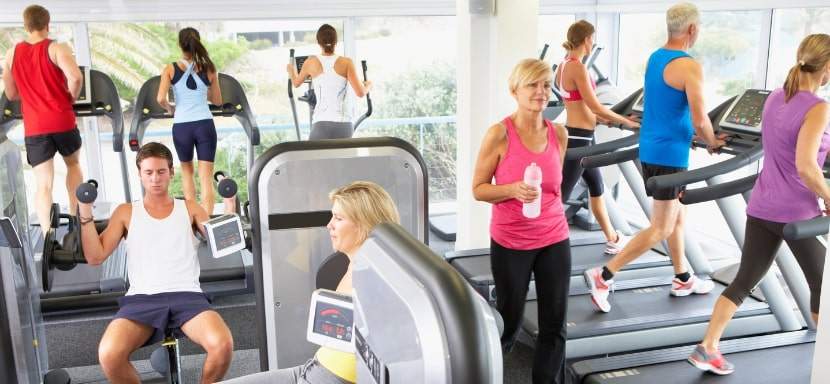
How to Survive Your First Time at the Gym
Walking into a gym for the first time can feel like stepping into an alien world. The machines hum with purpose, the regulars move confidently, and you’re left standing there, clutching your water bottle, wondering whether you’re in the right place—or on the right...

How to Survive a Worldwide Communications Breakdown
Imagine waking up to silence. Your phone doesn’t buzz, your email won’t load, and even your local radio station crackles with static. A worldwide communications breakdown has hit. What next? For many, this doomsday scenario may sound like the opening lines of a...
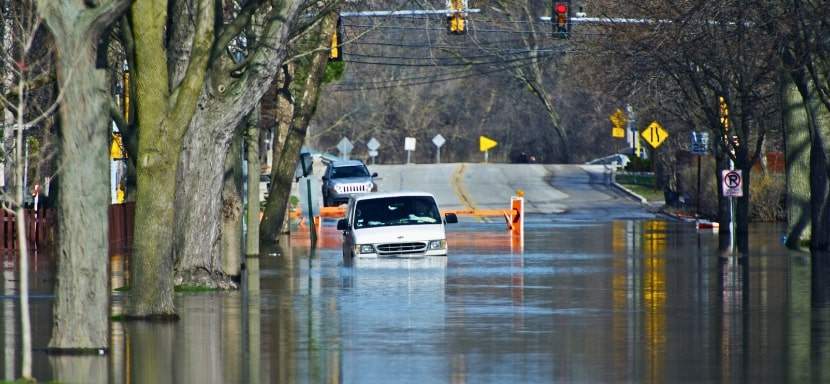
How to Survive a Flash Flood While Driving
Surviving a flash flood while driving requires quick thinking, calmness, and a solid plan to ensure your safety. Preparation can make all the difference between a close call and a catastrophe in emergencies like this. This guide provides practical advice to protect...
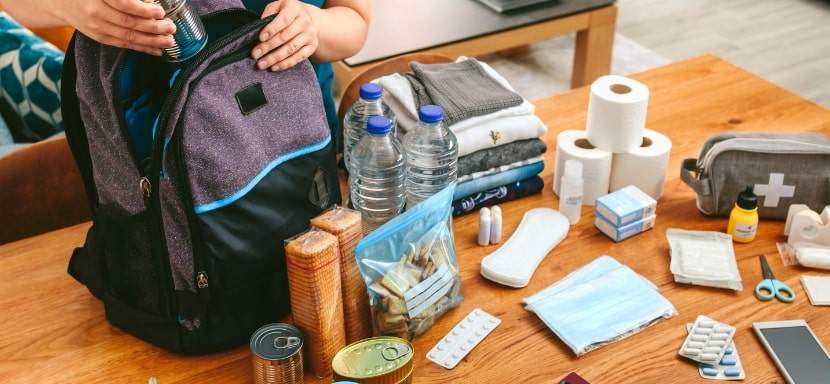
How to Build an Emergency Kit
Emergencies don’t knock politely at the door. They barge in, uninvited, like a distant relative with a penchant for drama, turning your world upside down without warning. Whether it’s a power outage, a natural disaster, or an unexpected evacuation, the key to staying...
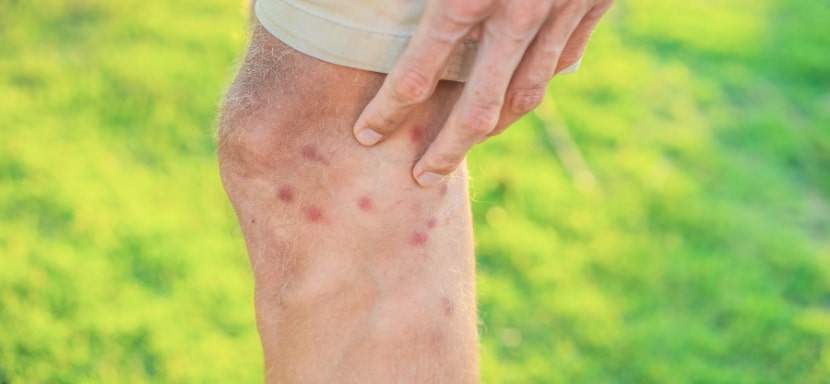
How to Protect Yourself From Insects in the Wild
There’s nothing like being out in the wild—birdsong echoing through the trees, the fresh scent of earth, and a deep sense of peace that makes you think, “Ah, this is what life is about.” But then comes the buzzing. Mosquitoes, ticks, and flies swoop in like uninvited...
